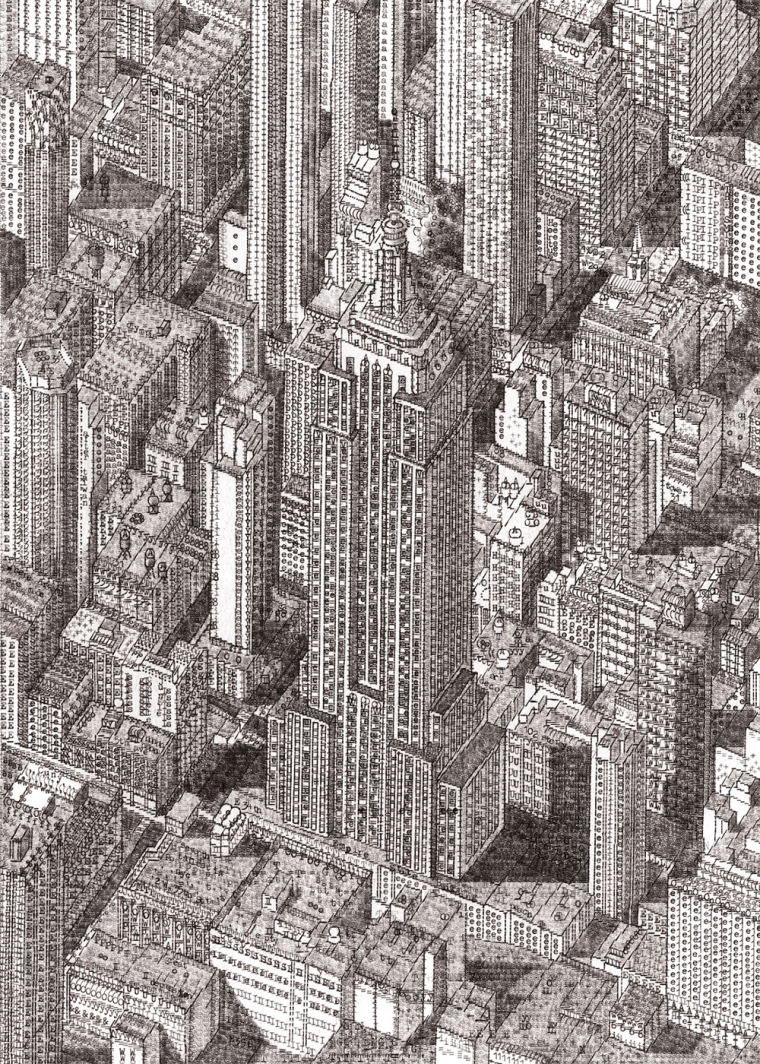At first glance the familiar Empire State Building looks like it has been sketched in charcoal. Skyscrapers rise around the tower in dark gray rectangular pillars. The shadows cast by the buildings appear to be smudges of pencil, until you look closer: The blur at the buildings’ edges comprise tiny, typed letters. U.K.-based artist James Cook uses a typewriter as the sole medium for his work, realistic renderings of portraits, monuments, and other treasures, all composed with nothing more than mechanical keystrokes. “Each drawing is constructed using many thousands of letters, numbers, and punctuation marks puzzle-pieced together to create architectural and portraiture artworks,” he says.

Over the past decade, he has acquired more than a hundred typewriters. For “Empire State Building” above, he used a 1960s Olympia SG3 typewriter and concealed within the artwork hidden typed messages, including architectural facts about the building and street names. Cook often incorporates these veiled messages to encourage viewers to look more closely following their first impression. During the COVID-19 pandemic, Cook quit his job doing drawings for an architecture firm to pursue typewriter art full time. He does not sketch his ideas and prefers jumping in, even if it takes months to complete the work and realize his vision. The pieces are mostly monochrome, though the occasional splash of color arrives in a yellow taxi or red Royal Albert Hall. Fans have sent him rare sets of typewriter ribbons from the 1970s, which he says he uses sparingly. Cook’s urban landscapes and literary puzzles are available online at jamescookartwork.com.








